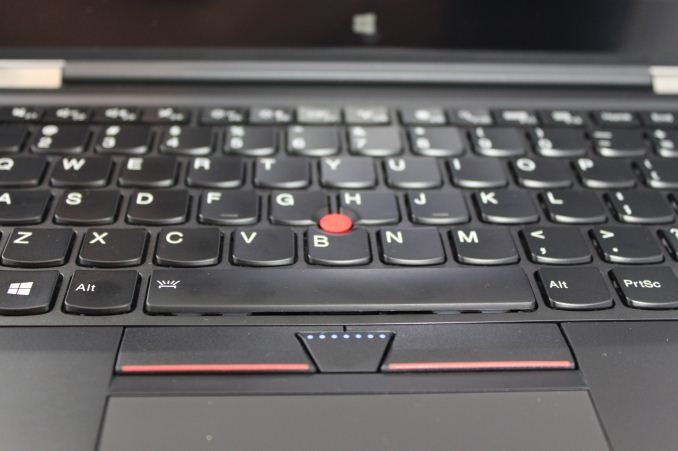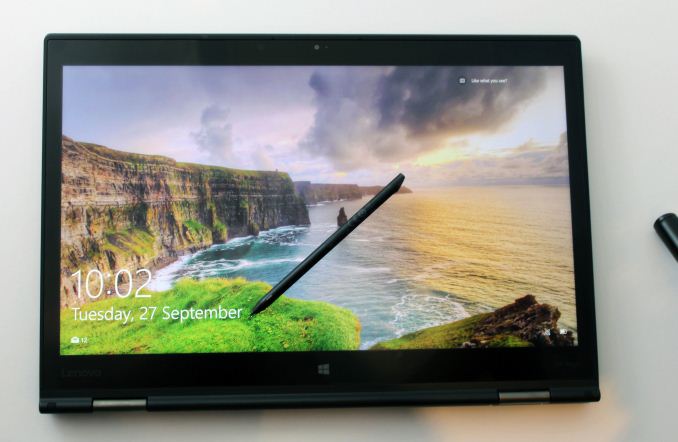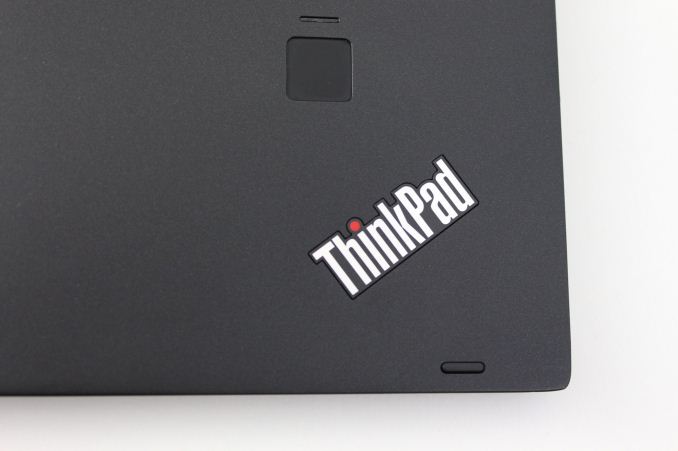The Lenovo ThinkPad X1 Yoga Review: OLED and LCD Tested
by Brett Howse & Brandon Chester on September 29, 2016 11:30 AM ESTFinal Words
Wrapping up, there’s quite a bit to go over with the ThinkPad X1 Yoga. Lenovo has done a great job continuing to make the X1 series thinner and lighter, and while some may question where that ends, anyone who needs a very portable laptop will appreciate this. Speaking of portability, Lenovo is one of the few brands to offer LTE connectivity in their ThinkPad lineup, further increasing the mobility of this notebook.
The X1 Yoga does a great job branching out from the X1 Carbon, which is itself an Ultrabook with positive characteristics. But the Yoga further builds on the Carbon by morphing that basic design into a thin and light two-in-one notebook using the Yoga hinge. For those looking for a notebook first, with some extra capabilities of being a touch device or tablet, the Yoga style devices from our experience win hands down over detachable convertibles. Compared to detachables, the Yoga devices have a much better weight distribution when used as a laptop, and Lenovo has included the ability to lock the keyboard when rotated, making it much better to hold and use in any of the non-laptop modes.
For performance, the battery life is reasonable by 2016 standards. One might suggest that with a premium line, a jump in platform efficiency would be a good aspect for the brand to move it into the higher echelons. Lenovo have been middle of the road against the competition in overall efficiency for some time - for some of the notebooks with large batteries this isn’t an issue, but on a size constrained notebook like the X1 Yoga, the effects are felt more quickly. The 52 Wh battery is a decent size for this size of notebook, but it isn't best-in-class.
We were lucky enough to be sampled both the LCD and OLED models to test. Lenovo is one of the first out of the gate with an OLED notebook, with a number of OLED designs on the market focusing on tablets, smartphones and VR. OLED technology has advantages that can really bring a wow factor to this market. The amazing contrast ratios of OLED easily outclass any LCD. While the OLED was advertised as highly accurate with specific options available, and it was much better than the LCD model, it still was not as good as some of the better notebooks we've seen over the past year or suited for professional use without user calibration tools. The color management software is comprehensive, so with some calibration the OLED on a per-unit basis from the factory would likely put the product ahead of the field in color accuracy.
It's hard to argue with the ThinkPad look, since it is so well known and Thinkpad customers demand it. Branding is difficult, and although some may find the ThinkPad lineup to be a bit low key, the matte black finish and design makes the laptop recognizable as a ThinkPad. Being a ThinkPad, it should be more durable than consumer notebooks, with a magnesium alloy chassis and military spec testing done to ensure it operates where many other laptops may struggle. For instance, the X1 Yoga, despite being convertible and despite having a lift and lock keyboard, still offers the spill-resistant keyboard. The polycarbonate exterior is pretty strong, especially where it is reinforced with carbon fibre, and there is a lot of durability there.
While the X1 Yoga keyboard can’t match some of the other thicker and heavier models like the T460s in key travel, it still has a great feel. The trackpad works well, and features a glass surface so it’s nice and smooth, which Lenovo combines with TrackPoint for those that use it.
Overall, the X1 Yoga is a good convertible. Lenovo has managed to make it thinner and lighter than the original X1 Carbon, yet still offer the versatility of the Yoga hinge. It's a solid offering from Lenovo. If thin, light, convertible, and business-class are all things you need, the X1 Yoga should be considered.













84 Comments
View All Comments
Inteli - Thursday, September 29, 2016 - link
Control does have a default/standard location, though. Both the ANSI and ISO standard keyboard layouts put left control in the bottom left corner.lefenzy - Thursday, September 29, 2016 - link
Well looking at wiki, the layout doesn't have a Fn key placement specification, and so having a Fn key is in itself non-standard. There's no default choice here.https://en.wikipedia.org/wiki/Fn_key#Fn_and_Contro...
Thinkpads used to have an excuse that Fn + the top right key would activate the keyboard illumination, and so having Fn in the bottom left would facilitate finding that key combo in the dark.
BrokenCrayons - Thursday, September 29, 2016 - link
The ANSI and ISO standard layouts are shown in images here:https://en.wikipedia.org/wiki/File:ANSI_Keyboard_L...
https://en.wikipedia.org/wiki/File:KB_United_Kingd...
You can read the full article here:
https://en.wikipedia.org/wiki/Keyboard_layout
Placing the Function key in the lower left corner and moving the control key that should be there to someplace else deviates from those standards. The language used in the article is indeed reasonable.
lefenzy - Thursday, September 29, 2016 - link
Well looking at wiki, the layout doesn't have a Fn key placement specification, and so having a Fn key is in itself non-standard. There's no default choice here.https://en.wikipedia.org/wiki/Fn_key#Fn_and_Contro...
Thinkpads used to have an excuse that Fn + the top right key would activate the keyboard illumination, and so having Fn in the bottom left would facilitate finding that key combo in the dark.
Brett Howse - Thursday, September 29, 2016 - link
If it wasn't an oddball placement on a Windows laptop, Lenovo wouldn't offer a switch in the BIOS to reverse their function. Even other Lenovo laptops have Ctrl on the outside. I don't think it's a big deal, and you can switch it if you do, but it's worth pointing out that it's not the same as what someone coming from a non-ThinkPad would be used to.Badelhas - Thursday, September 29, 2016 - link
Is there a real world difference between using the SSD or NVMe storage option?Brett Howse - Thursday, September 29, 2016 - link
It depends what you are doing I guess. It's not anywhere near as big of a difference as when we first got SSDs though. If you work with large files though, the read and write of something like a 950 Pro is kind of mind-boggling.cptcolo - Saturday, November 12, 2016 - link
Yes. The difference is huge. I have the X1 Yoga with the 1TB PM961 NVMe. It is simply amazing how fast it is with the supercharged SDD. It is definitely worth the price difference over the SATA SSD.fanofanand - Thursday, September 29, 2016 - link
I recently received a new laptop at work, replacing an old thinkpad. It's weight is similar but is half the thickness. Battery life increased from 95 minutes to 8 hours. I was a believer in battery life over thin, but it seems like they can finally match the two together, assuming you aren't trying to game on battery. This is a really cool device with a really high price. They will sell plenty, but not to me. If they had a version around $1,000 with a few less bells and whistles, it would be a game changer.snakyjake - Thursday, September 29, 2016 - link
Is the camera an Intel RealSense camera for biometric facial recognition?